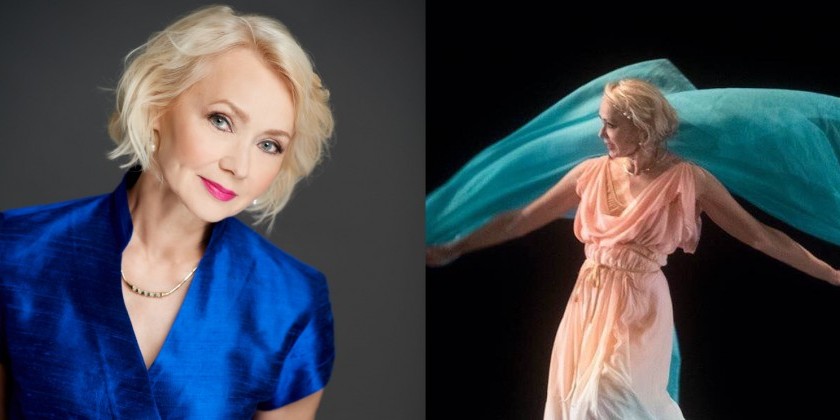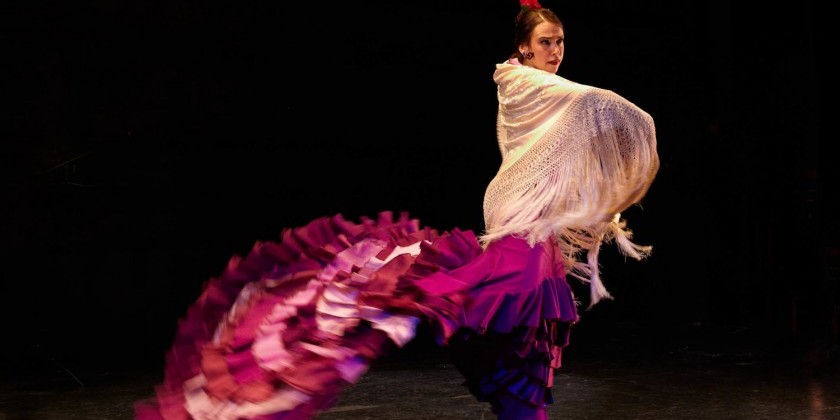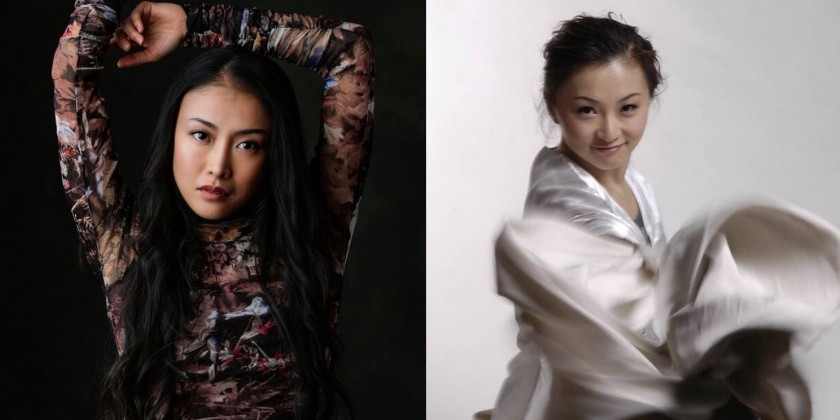TDE Asks Luca Veggetti About “Left-Right-Left,” A Contemporary Dance Set To Japanese Noh Music

As Part of NOH-NOW Series Coinciding With Japan Society’s 110th Anniversary On October 13-14, 2017
Left-Right-Left
Choreographer/Director: Luca Veggetti
Friday-Saturday, October 13-14, 2017
Venue: Japan Society, Auditorium, 333 E 47th St, New York, NY 10017
Tickets: www.japansociety.org
Pictured above: Genjiro Okura, Megumi Nakamura, Yukio Suzuk, Akira Kasai, Rokurobyoe Fujita at Yokohama Noh Theater, September 1, 2017 (recent world premiere). Photo credit: Yoichi Tsukada.
Sammi Lim for The Dance Enthusiast: It’s no secret that your artistic practice has long been entwined with Japanese culture. Who/What reeled you in?
Luca Veggetti: Noh, a unique form of danced opera or dance theater, is the world's oldest theatrical tradition, this fact alone was enough for Noh to exert on me an extraordinary fascination from the time I first encountered it forty years ago or so. It has ever since embodied an ideal in terms of the complex web of relations that are at the base of any theatrical event. As to why Japan and its traditions, and not another country or cultural context, I feel I should tell a little anecdote: When I was five years old, the teacher at elementary school asked us to draw a picture of a tree. For some reason, my mother had kept that drawing and when she first met Moe, the young Japanese visual artist that was to become my wife, she showed it to her, we then discovered that my drawing of a tree at five, with a precision that could not be mistaken for something done accidentally, was the Chinese character for "tree". Needless to say I had not idea then of what Japan was, beside the name of a country I had vaguely heard of.

TDE: What three facts about Noh would improve the audience’s understanding or appreciation of Left-Right-Left?
LV: The fact that at its core lies the art of the performer and the act of performance itself. That sound and space are intrinsically connected. That its origins are in part shamanic.
TDE: I don't want to be lump two completely different works together, but when I researched Okina, my first thoughts were of The Rite of Spring, since both works address ceremony and sacrifice. Do you think it's a way for storytellers to make sense of our place on earth and connection with the land?
LV: Not only for storytellers. I believe that anybody exploring reality through art cannot do so without linking any aspect of human condition to the place we have on earth and to the land we are part of.

TDE: Will dancers Akira Kasai, Megumi Nakamura and Yukio Suzuki assume specific or several roles?
LV: No, they are simply performers; they realize their identity through their actions.
TDE: What informed your decision to pick child actor Rinzo Nagayama as the evening’s narrator?
LV: Rinzo is not a narrator; the performance does not have one. He simply embodies part of the text through his voice. The voice and the text are vital elements in the overall construction and balance of the work. The choice came after thoughtful consideration with my collaborators. The cast did not include a Noh actor, and I was hesitant in relying uniquely on the voices of three dancers. The decision to involve a child actor from Noh inspired us to develop a vocal style unique to the performance, bringing full meaning to the word "translation" – the fragments of text are in fact new English translations by the great Donald Keene. Rinzo chants them by transposing a vocal technique that is proper to the Japanese language only.

TDE: If aliens visited earth and you could perform one piece of choreography to explain what it is that you do, what would it be?
LV: For what we know aliens might have been among us for a very long time, and for sure some of our oldest choreographic patterns are a way of understanding our cosmic nature. However, if I have to envision my own encounter with an alien, as in a science-fiction movie, I would probably see myself trying to communicate in a mix of words, sounds, gestures and movements – as we often do when in front of someone who does not speak our language – wouldn't I then be performing some sort of dance as in Noh?
TDE: The Dance Enthusiast is a huge proponent of audience reviews. How much of your work is informed by feedback? Or not at all?
LV: Without an audience of at least one person my work would not exist, at all, it would be just a personal exploration – and a very expensive one most probably. Any feedback or response is not just useful, but also the only meter I have to evaluate my efforts. Of course this bears many complexities, especially when confronted with negative reactions, leading to a state of mind that ranges from desperation to outrage. One is prone to dismiss it all because no one is sensitive enough to understand our genius. But in truth, without people's reaction, we would all be in a sterile void, alone.
The Dance Enthusiast Asks Questions and Creates Conversation.
For more of The Dance Enthusiast Asks, click here.
Share your #AudienceReview of this performance or others for a chance to win a prize.















